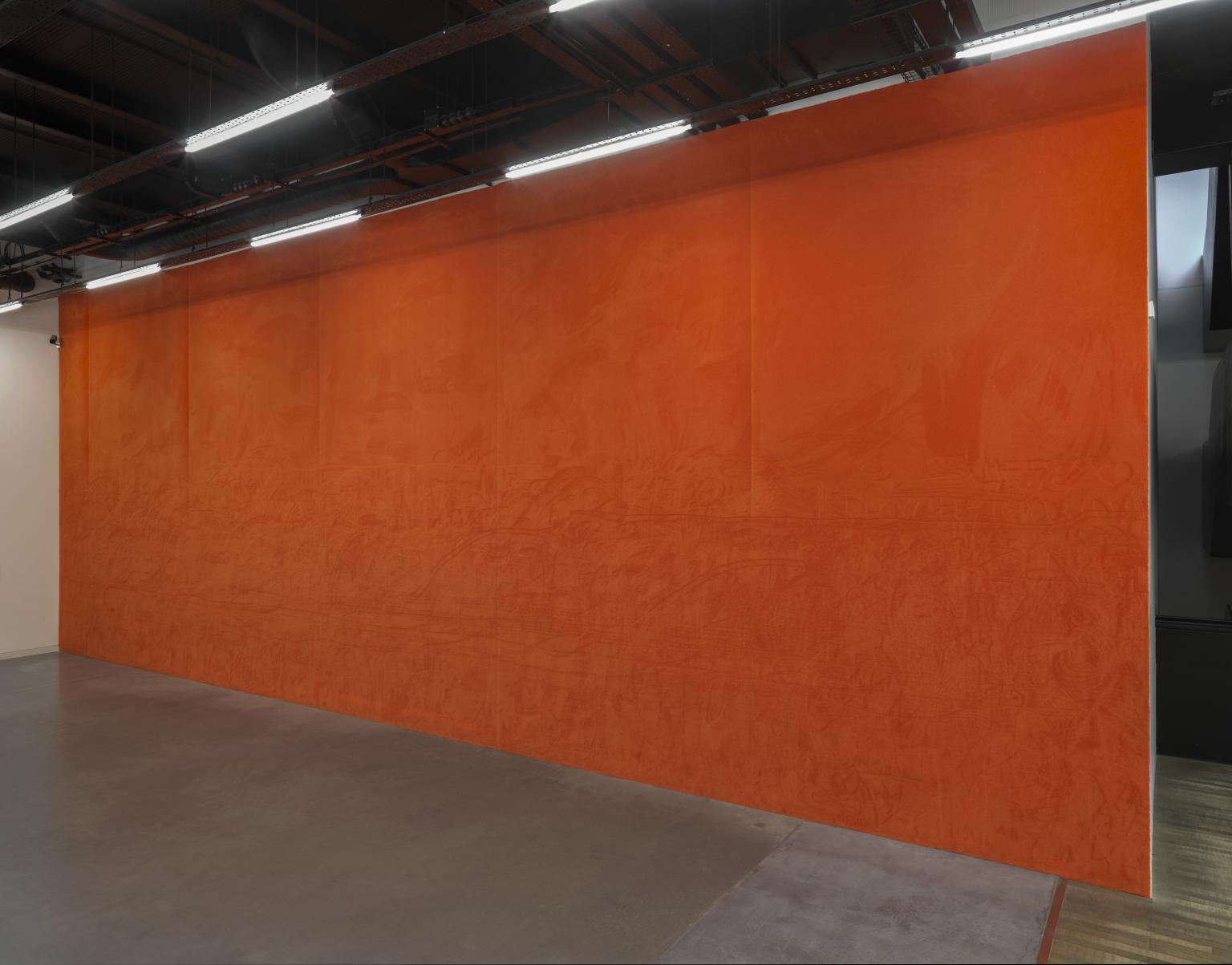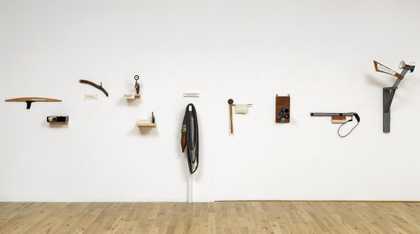Using wit and humour, Jimmie Durham's art subverts the foundations of modern western culture
Durham began his artistic career as a response to the civil rights movement. He was an organiser for the American Indian Movement (AIM) in the 1970s. As an activist, he fought against the racist policies and social injustices inflicted on Native American people in the United States. His art and writings are inspired by this commitment. Using assemblage techniques and the poetics of language, Durham's art playfully upturns the political and intellectual foundations of Western culture. These include the separation between the natural and the human-made worlds, and the linear narratives of time and history.
Most of the works in this room were first shown as part of Durham's installation at the 1993 Whitney Biennial in New York. He presented a series of sculptures that resemble guns and surveillance devices, alluding to modern methods of control and domination. These were crudely assembled using found objects and materials he had collected in his then-studio in Cuernavaca, Mexico. Durham then affixed texts with passages from Western literature. He described the final works as looking 'like a science fiction-type weapon as much as anything.’
The wall-mounted sculptures are reunited here with a floor-based work from the installation. They are displayed alongside a more recent work, Alpine Ibex, part of a series of sculptures made as an homage to animal species native to Europe.
Art in this room


